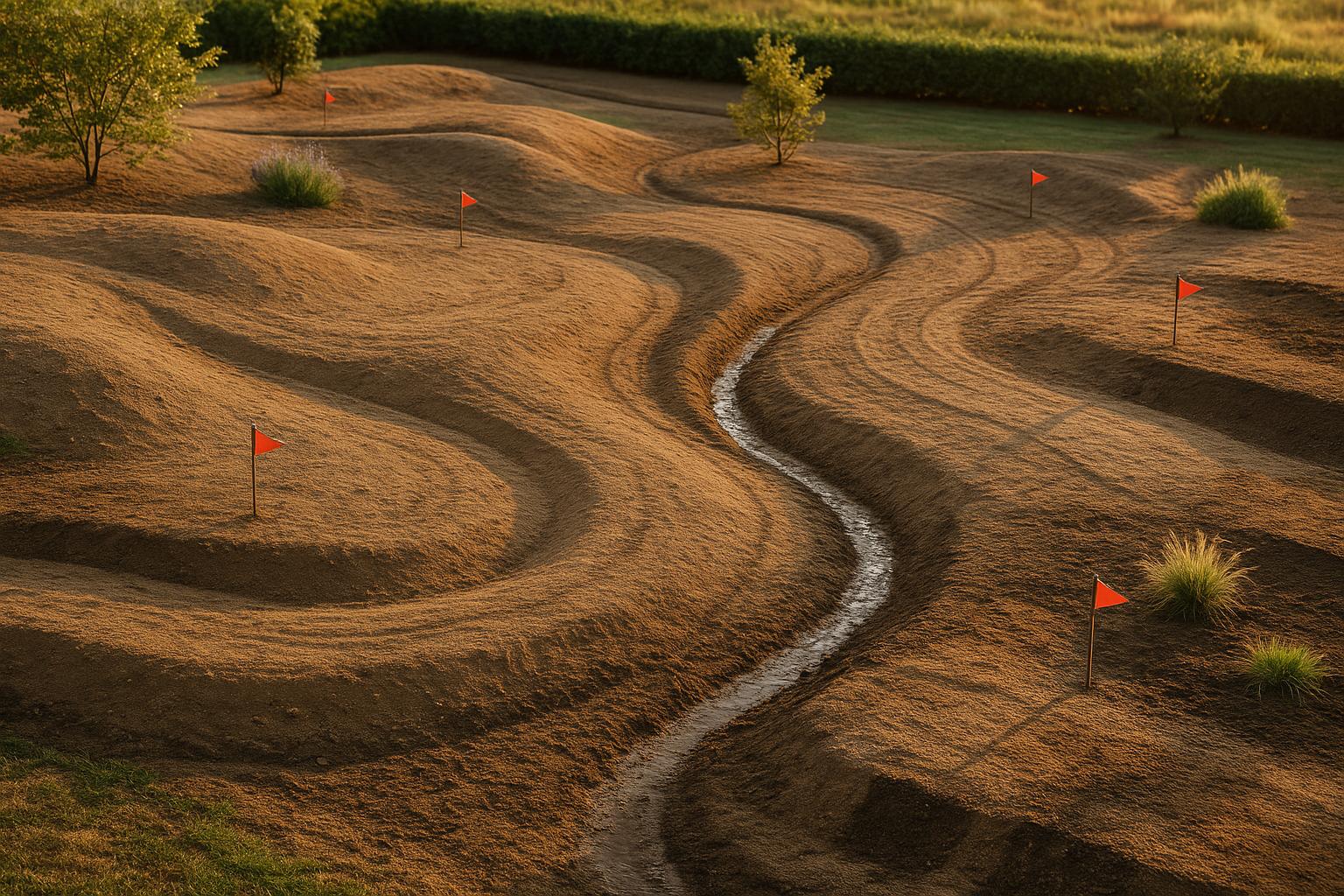Ecosystem services are the benefits nature provides to improve human well-being, including clean air, water, disaster protection, and places for recreation. These are grouped into four categories:
- Provisioning: Resources like food and water.
- Regulating: Climate control, pest management.
- Supporting: Soil formation, nutrient cycling.
- Cultural: Recreation, beauty, education.
Key Takeaways:
- Non-Material Benefits: Includes recreation, aesthetics, cultural heritage, and education. These improve mental health, preserve traditions, and foster learning.
- Assessment Tools: Use surveys, community input, and data analysis to measure these benefits and design better spaces.
- Practical Applications: Urban parks, community gardens, and wildlife-friendly landscapes can combine ecological health with human enjoyment.
By integrating community feedback and ecological insights, landscapes can serve both people and nature effectively.
Ways to Measure Non-Material Benefits
Comparing Monetary and Non-Monetary Methods
Understanding non-material benefits often requires using both financial and non-financial approaches. Each method has its strengths and weaknesses.
| Method Type | Tools & Applications | Pros & Cons |
|---|---|---|
| Monetary | Property analysis, tourism tracking | Provides clear financial metrics but may overlook cultural aspects. |
| Non-Monetary | Surveys, stakeholder workshops | Captures intangible values but is harder to standardize. |
Involving Communities in Assessments
Involving local communities is key to accurately measuring non-material benefits. The EPA's Ecosystem Services Tool Selection Portal highlights how working with stakeholders improves assessments. By engaging with locals, you ensure that no important ecosystem service is missed.
The USGS takes this further by using indicators that connect benefits to well-being. This method bridges scientific data with community values, offering a clearer picture of how ecosystems enhance people's lives.
Common Challenges in Measuring Benefits
Measuring non-material benefits comes with its challenges. Cultural differences and personal preferences shape how communities value these services, making it hard to create a one-size-fits-all approach. Tools like multicriteria analysis can help quantify elements like aesthetic or spiritual value, but standardizing these measurements remains a complex task.
Using Assessments in Landscaping Projects
Designing Landscapes with Purpose
The National Ecosystem Services Classification System (NESCS) provides a framework for creating landscapes that serve both practical and community-focused purposes. By combining ecological data with feedback from local communities, designers can craft spaces that meet environmental goals while addressing human needs.
| Assessment Component | Purpose | Contribution to Design |
|---|---|---|
| Biophysical Analysis | Evaluates ecological functions | Ensures designs are environmentally sound |
| Social Surveys | Gathers input from the community | Aligns projects with local priorities |
| Economic Evaluation | Assesses long-term value | Guides sustainable investment |
This approach is especially useful in cities, where spaces like parks must balance recreation, ecology, and social interaction.
Urban Parks: A Case Study in Community Design
The US EPA's Coastal Community Resilience project highlights how ecosystem assessments can transform urban parks into vibrant community hubs. These assessments help identify features that encourage activities like recreation, foster social connections, and support ecological functions.
By applying these insights, urban parks can better meet the needs of their communities. Tools like the EPA's Ecosystem Services Tool Selection Portal help planners choose methods that align social priorities with environmental considerations. Organizations such as Thrive Lot also apply these principles to create spaces that benefit both people and nature.
Thrive Lot’s Approach to Landscaping

Thrive Lot uses ecosystem service assessments to guide their designs for sustainable outdoor spaces. Their projects emphasize edible and ecological landscapes, supporting food production, wildlife habitats, and stronger community ties, all while promoting environmental health.
Before starting a project, Thrive Lot evaluates site-specific conditions and community needs. By incorporating these findings, they create landscapes that enhance local ecosystems and improve quality of life for the people who use them. This thoughtful design process showcases how landscaping can bridge ecological and social goals effectively.
Advantages of Including Non-Material Benefits in Landscaping
Encouraging Community Interaction
Landscapes designed with community in mind create spaces where people can connect. Whether it's a casual meetup or a larger event, these areas bring neighbors together. Community gardens, for example, go beyond just growing plants - they become places for sharing knowledge, exchanging cultural traditions, and bridging generational gaps. Think of them as outdoor classrooms where experienced gardeners can guide newcomers. These spaces not only strengthen social ties but also make properties more versatile and inviting.
Boosting Property Appeal and Functionality
Landscapes that go beyond aesthetics can increase the utility and value of a property. These designs serve multiple purposes, blending beauty with practicality:
| Benefit Type | Impact on Property | Practical Application |
|---|---|---|
| Visual Appeal | Enhances property value | Native plant gardens, seasonal displays |
| Usable Areas | Supports diverse activities | Multi-use spaces for recreation or events |
| Educational Features | Promotes learning | Wildlife habitats, edible gardens |
| Cultural Elements | Builds a sense of place | Local art, heritage plantings |
Thrive Lot showcases how these elements can turn ordinary yards into vibrant outdoor areas. Their projects often feature edible gardens and pollinator-friendly zones, combining practical use with a deeper connection to nature. Beyond benefits for people, these landscapes also play a key role in supporting local ecosystems and biodiversity.
Helping Local Wildlife and Ecosystems
Landscapes designed with nature in mind provide critical support for local wildlife. Native plant gardens, for instance, create habitats that attract birds, pollinators, and other species, while also offering opportunities for residents to observe and learn about ecological systems. These spaces double as outdoor science labs, making nature accessible and engaging.
To support wildlife effectively, try incorporating a variety of habitat layers:
- Ground cover for small animals and insects
- Mid-height shrubs for birds and pollinators
- Canopy trees for shade and shelter
Such thoughtful design not only benefits the environment but also brings people closer to the natural world around them.
sbb-itb-1d926cd
Summary and Next Steps
Key Takeaways
Non-material ecosystem services play a crucial role in improving community well-being by offering cultural, educational, and social advantages. Assessing these services effectively requires a mix of economic evaluation, community feedback, and ecological analysis. These services contribute to clean air, water, and spaces for recreation, forming a core part of thoughtful landscape design. The best projects strike a balance between measurable data and human-centered insights, ensuring landscapes serve multiple purposes while preserving ecological health.
Tips for Homeowners and Professionals
Even small, deliberate adjustments can improve non-material ecosystem services. Partnering with experts like Thrive Lot can help create outdoor spaces that combine visual appeal with environmental responsibility.
| Design Element | Social Benefit | Implementation Approach |
|---|---|---|
| Community Spaces | Encourages social connection | Shared gardens, gathering spots |
| Cultural/Educational Features | Promotes learning and heritage | Interpretive signs, native plantings |
By applying these strategies, both homeowners and professionals can design landscapes that deliver social and environmental advantages.
Areas for Further Exploration
For anyone involved in designing or researching landscapes, understanding how to assess ecosystem services is key to creating spaces with lasting impact. Important research topics include improving tools for measuring social benefits, developing consistent metrics, and studying the long-term effects of integrated designs on community well-being.
The National Ecosystem Services Classification System (NESCS) offers a framework for exploring these connections, helping to design resilient and socially meaningful outdoor spaces for the future. While practical actions can be taken now, continued research will deepen our knowledge of how landscapes can better serve communities.
Related video from YouTube
FAQs
Below are answers to common questions about cultural ecosystem services and their social impact.
What is an example of a cultural ecosystem service?
Cultural ecosystem services provide non-material benefits such as recreation, education, and fostering a sense of community through natural spaces. Examples include sacred sites and traditional landscapes that hold spiritual and historical meaning for communities. Nature trails designed for mindfulness or meditation highlight how these spaces can promote mental health and a deeper connection to the environment. Additionally, programs like nature interpretation tours offer educational experiences, helping people better understand and appreciate their surroundings.
What is the social value of an ecosystem?
The social value of ecosystems lies in the non-monetary benefits they provide. Tools like Social Values for Ecosystem Services (SolVES) help measure these values, which include beauty, recreation, and cultural heritage.
| Value Type | Description | Assessment Method |
|---|---|---|
| Aesthetic | Visual appeal and landscape beauty | Community surveys and geographic analysis |
| Recreational | Physical activities and leisure | Usage patterns and visitor feedback |
| Cultural Heritage | Historical and spiritual significance | Local stakeholder interviews |
| Educational | Learning opportunities | Program participation metrics |
The Millennium Ecosystem Assessment (2005) emphasizes that cultural services provide benefits like recreation, spiritual enrichment, and education. These insights can guide homeowners and professionals in creating landscapes that support both community well-being and ecological balance.



